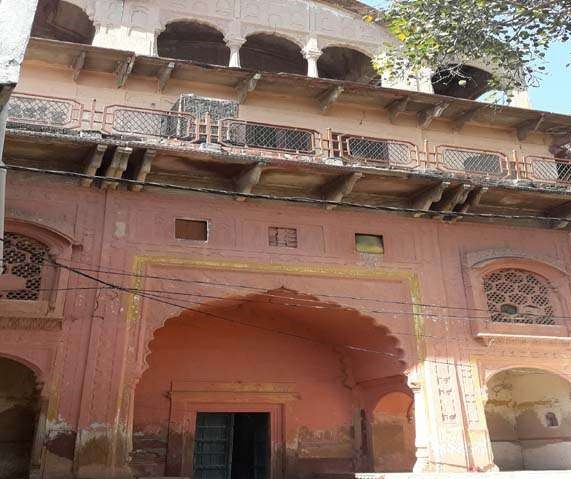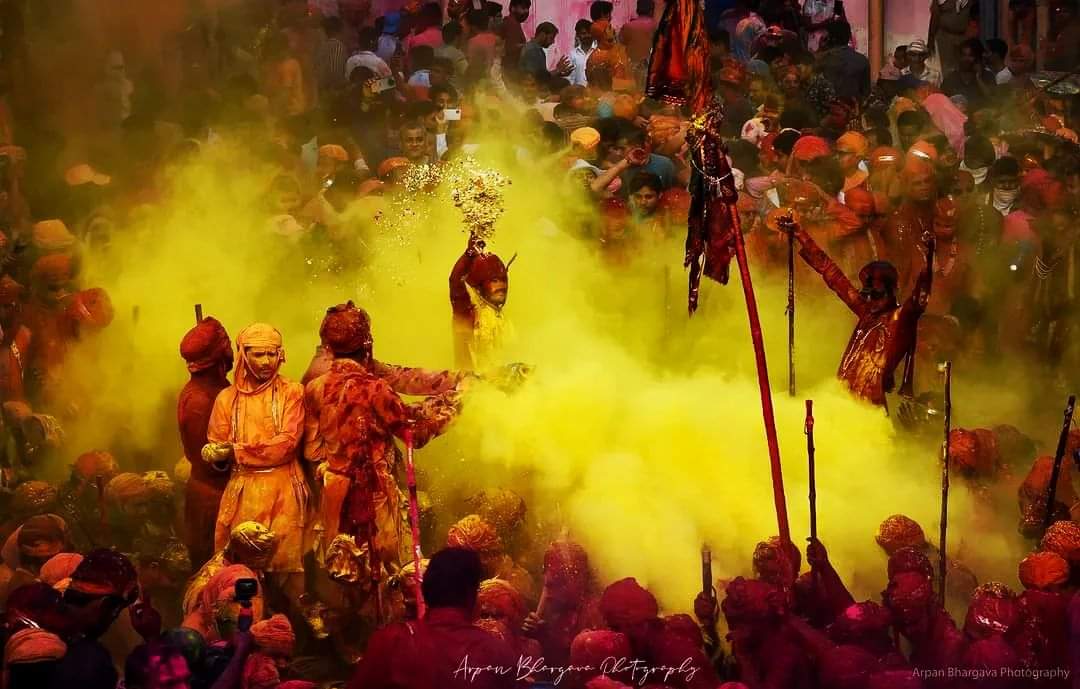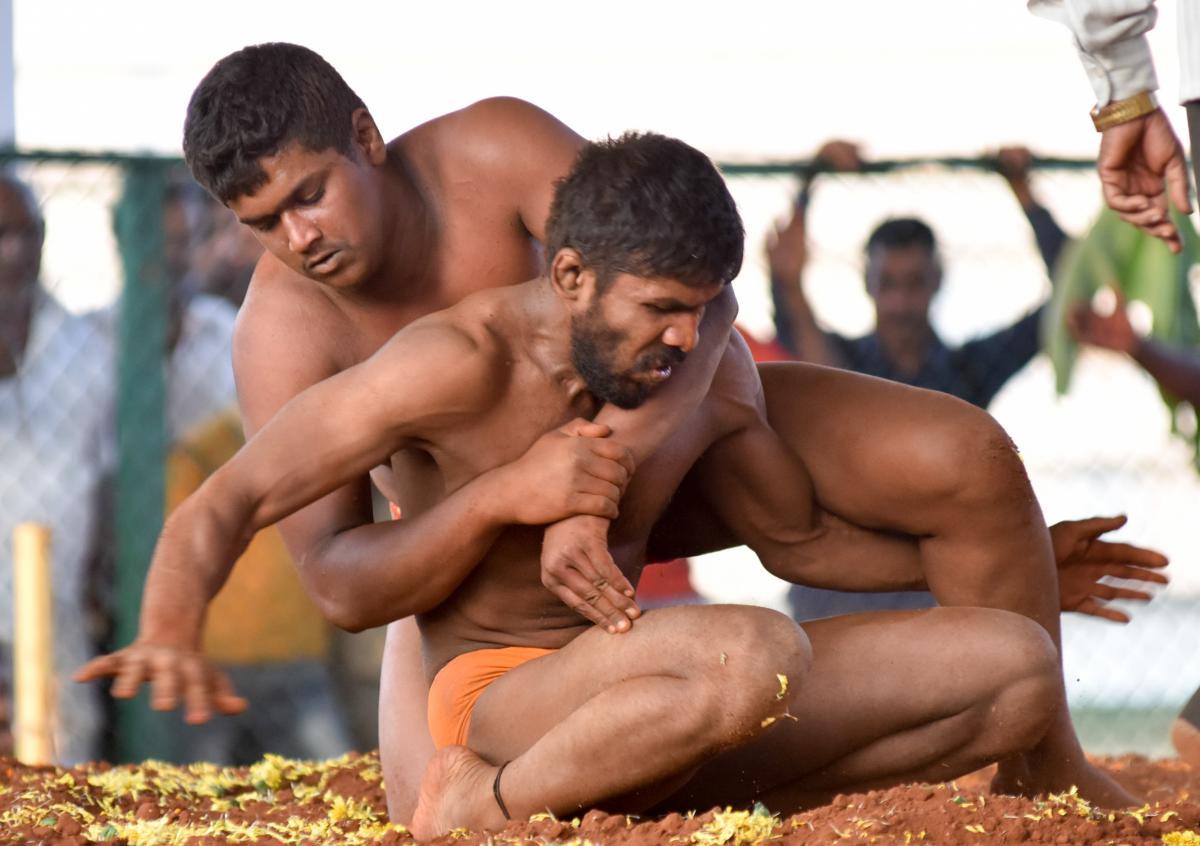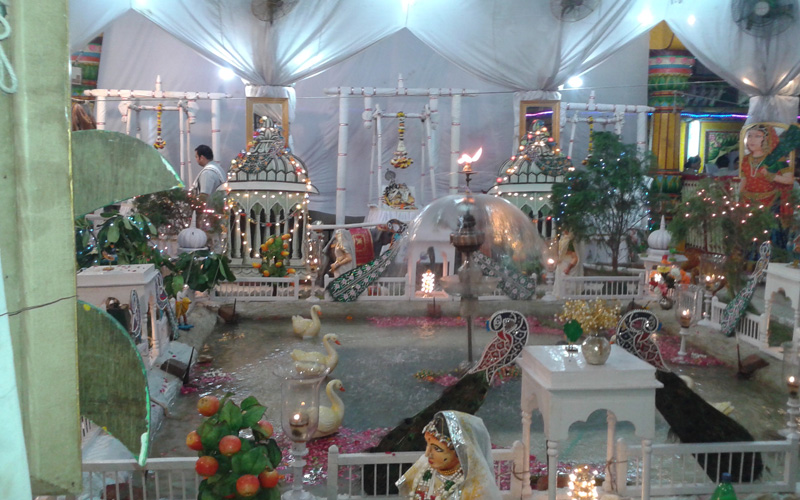- By Ashee Sharma
On February 22, 1877 Mathura’s collector Sir F.S. Growse watched the Lathmaar Holi from the balcony of Katara Haveli.
Barsana 2022-03-15 (Vrindavan Today News): Katara Haveli, the iconic heritage building of Barsana, has been a silent witness to the town’s spirited Holi celebration for over a couple of centuries. Built by Rup Ram Katara, the purohit (family priest) of Raja Surajmal of Bharatpur state, this quaint, old-world structure is famous for offering a comprehensive, all-round and ‘safe’ view of the fun-filled Holi extravaganza, without having to venture out amidst the raining lathis!
For this reason the Haveli has been the go-to-destination for VIPs for Lathmaar Holi. It was also a favourite of the British officials during the pre-independence years. Nearly 145 years ago on February 22, 1877 the then collector of Mathura, Sir Frederic Salmon Growse witnessed the exuberance and eccentricities of Barsana’s Lathmaar Holi sitting in the balcony of Katara Haveli.

Describing the scene in his 1883 memoir he wrote, “In the middle of the town is a small open square, about which are ground the stately mansions and temples built by the great families who resided here during the first half of the 18th century. A seat in the balcony over the gateway of the house still occupied by the impoverished descendants of the famous Katara, Rup Ram, the founder of Barsana’s short-lived magnificence, commands a full view of the humours of the crowd below. The cheeriness of the holiday-makers as they throng the narrow winding streets on their way to and from the central square, where they break up into groups of bright and ever-varying combinations of colour; with the buffooneries of the village clowns and the grotesque dances of the lusty swains, who with castanets in hand caricature in their movements the conventional graces of the Indian ballet-girl, all make up a sufficiently amusing spectacle; but these are only interludes and accessories to the great event of the day. This is a sham fight between the men from the neighbouring village of Nand-ganw and the Barsana ladies, the wives of the Gosains of the temple of Larli Ji, which stands high on the crest of the rock that overlooks the arena. The women have their mantles drawn down over their faces and are armed with long, heavy bambus, with which they deal their opponents many shrews blows on the head and shoulders. They latter defend themselves as best they can with round leather shields and stag’s horns…”





